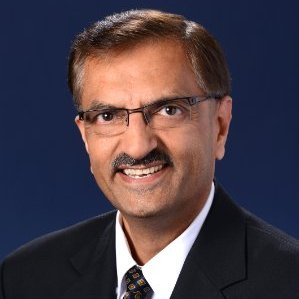When the Disaster Strikes
Natural disasters—tsunamis, earthquakes, hurricanes and tornadoes—have afflicted destruction on human life for centuries. Unfortunately, in addition to having to bear the brunt of Mother Nature’s awe-inspiring force, we also have man-made disasters, whether they be intentional acts of terrorism or a lack of diligent maintenance of electricity wires that cause wildfires. No matter the cause of the disaster, we need to be better prepared before, during and after disasters to minimize the loss of life and damage to property. Many advanced technologies provide forewarning before a hurricane, tsunami, or earthquake; during a disaster, we may use our mobile devices to find the fastest escape routes to safety from a wildfire. The aftermath of a disaster is a mammoth challenge unto itself – from emergency services having to reach the affected locations to the clean-up efforts and rebuilding of communities.
As we deploy technology-based infrastructure to assist us in all three phases of a disaster, it is important to recognize the role technical standards play in such infrastructure. Raimundo Rodulfo, Director of Information Technology for the city of Coral Gables, Florida, did just that in preparation for dealing with the hurricanes that often devastate the Florida coast. “Connected Through a Disaster” tells us the role IEEE 802 standards played in “creating a resistant, reliable communications network to safeguard its infrastructure and ensure uptime of critical services.” Along the same lines Jeffry Handal describes the role of communication standards well beyond wireless/Wi-Fi (
IEEE Std 802.11) and cellular phones in his article “
The Standard Response.” Jeffry also walks you through several scenarios in which standards are used in disaster recovery, having personally lived through a few disasters in Louisiana and Texas. I admire his view that we should deploy many of our advanced technologies in the underdeveloped areas, which in many cases—at least from technology access standpoint—resemble post-disaster areas, in order to learn and prepare ourselves for disaster recovery efforts everywhere.
A complimentary proposal is put forward by a team of researchers at the National Institute of Standards and Technology (NIST), who imagine the possibility of simulating a disaster to improve preparedness. They simulated partial disasters through a controlled detonation of an apartment building, stadium, shopping mall, and a convention center. You can begin by reading my commentary and follow along with NIST’s seven detailed reports. Thanks to Chris Holloway at NIST for sharing these reports with us.
Communication infrastructure is often destroyed during a disaster such as a hurricane or an earthquake, making it difficult to coordinate the responses and deployment of resources. There is a solution to this problem and it is the development of rapidly deployable and interoperable communication systems. Prof. Kamesh Namuduri describes the details in “Emergency Communication: The Need of the Hour: A Case for Standards in Rapidly Deployable Communication Systems for Public Safety.”
Now, if you think technology standards are playing a big role in disaster recovery efforts, let’s look at those who work on community service projects, especially in remote and impoverished areas, to prepare for faster recovery. They are the real heroes. Prof. Nick Kirsch, Chair, Engineering Projects in Community Service (EPICS) describes some of the recent projects in his article “EPICS in IEEE teaches and inspires students through community service.” I applaud these university students and their mentors for bringing electricity and communication systems to remote areas, not just for everyday convenience, but being prepared in the event of an impending disaster or recovery efforts after a disaster. Why not follow suit and create your own EPICS project using funds from Prof. Kirsch?
As much as we recognize the deployment of technology and the underlying standards in dealing with disasters, there are a number of challenges faced by the first responders and other volunteers that can be addressed through smarter use of the technology. Therein lies the opportunity to recognize use of existing standards, or to develop a few that may be missing, to enable the emerging, disjointed technologies to fit in and develop new infrastructure.
Many of us focus on use of technology to deal with natural disasters, but the threat of man-made disasters are looming large. We have seen several cyberattacks in recent times, each one more severe in its ability to affect and disrupt lives of millions of people. Can we deploy some standards to prevent such attacks? Read the futuristic article “
The World in 2050: Safety by Design” by San Jose State University student Tiana Ashley Khong. For this essay, she won the ANSI paper contest last year.
Think about it … before the next disaster strikes and you say in despair ‘wish there was a standard!’
Yatin Trivedi
Editor-in-Chief, IEEE Standards Education eZine
Member, IEEE-SA Board of Governors
ytrivedi@ieee.org
Yatin Trivedi, Editor-in-Chief, is a member of the IEEE Standards Association Board of Governors (BoG) and Standards Education Committee (SEC), and serves as vice-chair for Design Automation Standards Committee (DASC) under Computer Society. Yatin served as the Standards Board representative to IEEE Education Activities Board (EAB) from 2012 until 2017. He also serves as the Chairman on the Board of Directors of the IEEE-ISTO.
Yatin currently serves as Associate Vice President for semiconductor design services at Aricent Inc. Prior to his current assignment, Yatin served as Director of Strategic Marketing at Synopsys where he was responsible for corporate-wide technical standards strategy. In 1992, Yatin co-founded Seva Technologies as one of the early Design Services companies in Silicon Valley. He co-authored the first book on Verilog HDL in 1990 and was the Editor of IEEE Std 1364-1995™ and IEEE Std 1364-2001™. He also started, managed and taught courses in VLSI Design Engineering curriculum at UC Santa Cruz extension (1990-2001). Yatin started his career at AMD and also worked at Sun Microsystems.
Yatin received his B.E. (Hons) EEE from BITS, Pilani and M.S. Computer Engineering from Case Western Reserve University. He is a Senior Member of the IEEE and a member of IEEE-HKN Honor Society.

